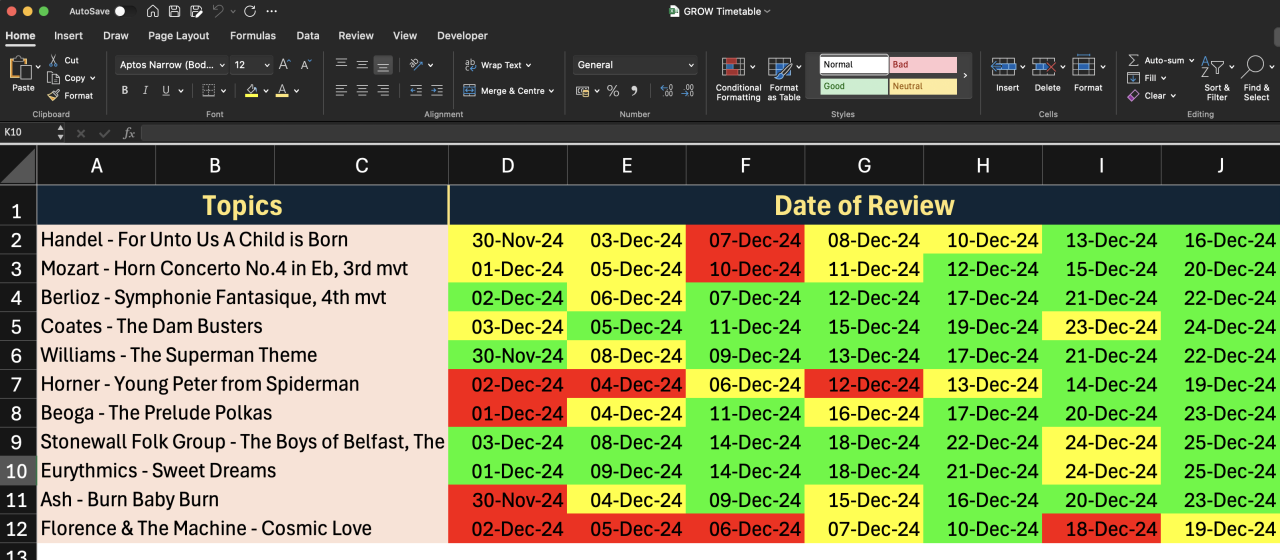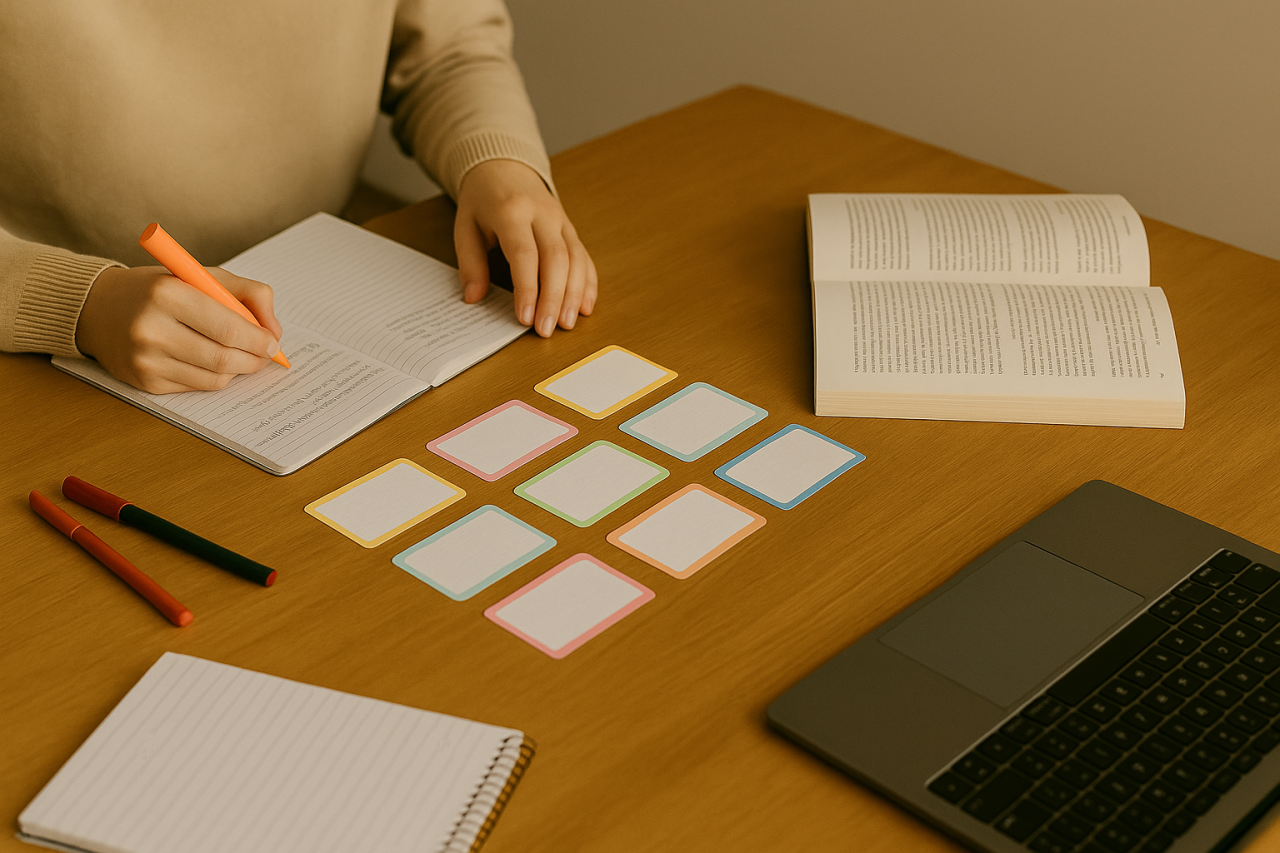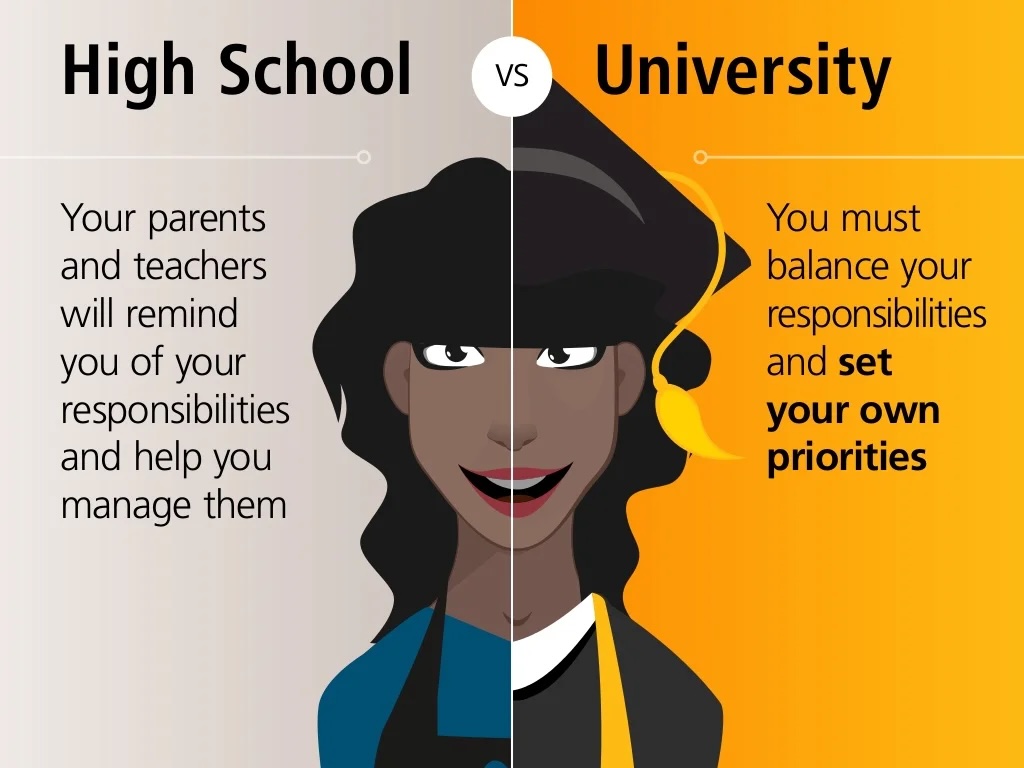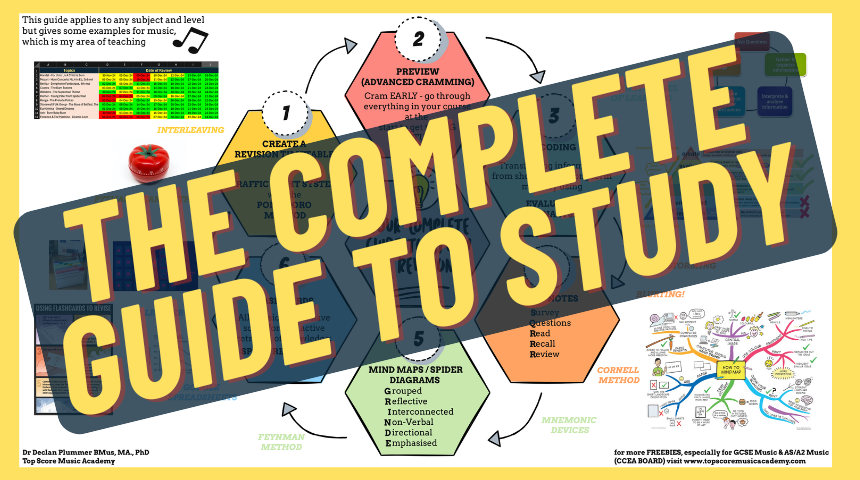How to Study - Part 1 Preparation & Organising

Build an Effective Timetable and how to do Advanced Cramming!
Mastering Music Revision: Proven Study Techniques for GCSE and A-Level Students
Preparing for your GCSE or A-Level Music exam can feel like a daunting task. Between analysing set works, understanding harmonic features, and recalling key musical terminology, it’s easy to feel overwhelmed. But according to Declan Plummer, music educator at the Ulster College of Music and Director of Top Score Music Academy, success in music exams is less about talent and more about technique — study technique, that is.
This comprehensive guide distils Declan’s teaching on revision strategies specifically tailored for music students, but applicable to any subject. Whether you’re studying for GCSE, AS, or A2, these methods will help you revise smarter, not harder.
---
1. Laying the Groundwork: Why a Good Revision System Matters
Before you dive into your study notes or set works, you need a plan — not just any plan, but one that’s flexible, structured, and personalised. One of the biggest mistakes students make is to revise without direction. Without structure, you’ll likely focus on what feels easy rather than what needs improvement.
A strong study routine helps you:
- Identify weak areas early.
- Stay consistent over weeks and months.
- Avoid burnout and last-minute panic.
And the best place to start? With the GROW method.
---

2. The GROW Method: Building a Smart, Adaptable Revision Timetable
Forget the rigid timetables that crumble after two weeks. The GROW timetable — which stands for Grid, Rating, Overall, Weakest topic — is designed to evolve as you study.
Step 1: Create a Revision Grid
Use a simple spreadsheet in Google Sheets or Excel. List your set works or topics vertically, and dates horizontally. Study through all your topics and Colour-code each topic using the traffic light system:
- Red: Weak areas that need more attention.
- Yellow: Moderate understanding, needs consolidation.
- Green: Confident mastery.
Step 2: Adapt and Rate Weekly
No one sticks to a fixed timetable perfectly. The GROW method encourages adaptability — adjusting based on your progress and feedback from flash cards, mock exams, past papers or class tests. Think of it as a living document that grows with your learning and studying - it should always be changing to reflect your knowledge retention, which is never fixed!
Step 3: Overall Goal
Your Overall goal is to turn the grid greener — but remember, progress isn’t always linear. Some topics may slip back to yellow or red, and that’s normal. The key is to keep reviewing and updating. Don't worry if things appear to be going red again - its actually worse if everything turns green too quickly as it shows you are probably not being honest with yourself about how difficult the topics are for you.
Step 4: Weakest topics first
After you have gone through all your topics, and triaged them into good, ok, and bad, you should go back over the weakest topics first - this could be by colour (red) AND/OR by date (last time you looked at it). This is the greatest strength of the GROW system - you will never again be left wondering what to do study, what are your weakest topics, and what you need to revise more! Remember, these all change throughout your study!
Students searching “how to make a revision plan” or “A study timetable template” will find the GROW method particularly effective for long-term retention.
---

3. Interleaving and the Power of Mixing It Up
Interleaving is one of the most effective cognitive learning strategies you can use. It means alternating between topics — for example, revising Beethoven, Mozart, and Handel in one study session rather than focusing on just one.
This approach helps your brain spot connections between musical styles, periods, and compositional techniques. For instance, comparing Baroque ornamentation to Romantic harmony builds a deeper understanding than rote memorisation ever could.
How to Use Interleaving in Music Study
- Choose three contrasting set works from different styles.
- Identify a common element — e.g., use of sequences, texture, or cadences.
- Ask: How do they differ? What musical context explains these differences?
Interleaving also connects with the Ziegarnik Effect — the psychological tendency to remember unfinished tasks better. When you switch topics mid-way, your brain keeps them active, improving long-term memory.
---

4. The Pythagorean Reflection Method: Strengthening Memory Through Recall
The Greek mathematician Pythagoras wasn’t just about triangles — he also influenced our understanding of how humans think. Declan introduces a “Pythagorean method” for studying music that involves active recall before sleep.
Here’s how it works:
1. Before bed, mentally replay your study session.
2. Ask yourself: What did I learn first today? What stuck out most?
3. Visualise where you were, what you heard, and how you felt, in as much detail as possible.
This simple nightly review strengthens long-term memory consolidation by associating musical information with vivid sensory memories. It’s especially useful for students searching for “memory techniques for music revision” or “how to remember set works.”
---

5. The Pomodoro Technique: Study in Short, Focused Bursts
A classic method among high-achieving students, the Pomodoro Technique helps you stay focused while avoiding fatigue.
How to Apply It
- Study for 25–30 minutes, then take a 5-minute break.
- After four “Pomodoros,” take a longer 15–30 minute break.
This approach leverages the Ziegarnik Effect again — by stopping mid-task, you create an urge to return and complete it. Use a timer app or your phone, but stay disciplined: five minutes means five minutes, not a scroll through TikTok.
Students searching “best study methods for ...” or “how to stay focused while revising” will find Pomodoro an invaluable tool for managing energy during long practice or analysis sessions.
---

6. The Art of To-Do Lists: Pre-Planning Your Study Sessions
Creating a daily to-do list transforms vague intentions into concrete goals. It helps answer the all-important question: What exactly am I going to do today?
How to Create an Effective To-Do List
1. Identify 2–3 specific achievable goals
2. Rank them by importance using your GROW colour codes.
3. Check them off as you complete each one.
This approach ensures every study session has a clear outcome. Pair it with the GROW timetable, and you’ll always know what to prioritise.
---

7. Advanced Cramming: The Smartest Way to Stay Ahead
Cramming gets a bad reputation — but advanced cramming flips the idea on its head. Instead of waiting until exam season, you “cram” early in the year.
What Is Advanced Cramming?
It’s the practice of previewing material before it’s taught in class. By spending just 30–60 minutes per set work early in the term, you build familiarity with key ideas and can later engage more meaningfully in lessons.
Benefits of Advanced Cramming
- You arrive at class prepared to ask insightful questions and never engage with a topic in class completely 'cold'.
- You remember more because your brain already has a “framework” for new information.
- You gain confidence in class participation and independent learning.
Declan recommends:
“Don’t wait for your teacher to spoon-feed you. Go through all your set works, listen to them, and note the top five ideas that stand out.”
---

8. Asking Better Questions: Turning Passive Learning into Active Discovery
Many students waste valuable class time asking questions they could easily look up — especially for definitions. Instead, use your teacher’s time wisely by preparing strategic questions.
Good questions include:
- “Where could I improve this mind map I made?”
- “What should I focus on when looking ahead to the next few topics”
---

9. The Science of Recall vs. Recognition
Declan emphasises that re-reading and highlighting are not effective revision methods. They create the illusion of progress without reinforcing memory. Be productive! Activity is not Progress!
Instead, focus on recall, not recognition:
- Recognition is when you see the right answer and say, “Oh yeah, I knew that.”
- Recall is when you can reproduce the answer from memory — cold.
In music exams, where you’re expected to describe, analyse, and compare set works without notes, recall is essential.
---

10. Taking Ownership: Becoming an Independent Learner
As Declan puts it, “School is the kiddie pool. University or work is the deep end.”
Learning how to study independently is one of the most valuable life skills you can gain from music education.
How to Take Ownership
- Build your own timetable using the GROW method.
- Try new study techniques — and refine what works for you.
- Use resources like YouTube tutorials, past papers, and peer discussions wisely.
---
11. Bonus: Using Technology and AI Responsibly
Declan acknowledges that tools like ChatGPT or other AI study aids can help summarise large amounts of information — especially when textbooks feel overwhelming.
However, he warns:
“Don’t let AI do all the heavy lifting. The act of organising information YOURSELF is what helps YOU remember it.”
Use AI to supplement your study — for example, to summarise a long reading or generate test questions — but the real learning happens when you engage with the material directly.
---
Conclusion: Turning Practice into Progress
Studying for music exams isn’t about memorising pages of notes or highlighting until your score turns neon. It’s about thinking like a musician — analysing patterns, recognising relationships, and making sense of what you hear. By adopting techniques like the GROW timetable, Pomodoro breaks, and advanced cramming, you’ll not only prepare more effectively for your exams but also build skills that will serve you for life: discipline, critical thinking, and creative problem-solving. So next time you sit down to revise your set works, don’t just study harder — study smarter. Your future self (and your exam results) will thank you!!
If you would like to know more about How to Study and get all the best tips from an expert educator, check out the following:
FREE Guide to Study (Handout for the Course)

For full details click here 👉 Free Guide to Study
OR Check out the following:
The Complete Guide to Study

✅ 3+ hours of high-quality on-demand video lessons
✅ Dozens of downloadable handouts, worksheets, and templates
✅ Interactive quizzes to test understanding
✅ Step-by-step demonstrations of study methods
✅ Real-world examples
✅ Lifetime access and future updates
✅ Direct feedback opportunities from the instructor
All the for only £19 one-time purchase! That's right - it's cheaper than a textbook!
For full details click here 👉 The Complete Guide to Study Course
Also check out our other blogs:
Part 2 How to Study - Encoding & Note-Taking
Part 3 How to Study - Mind Maps, Flashcards & Other Techniques
Categories: : How to Study
 Declan Plummer
Declan Plummer 